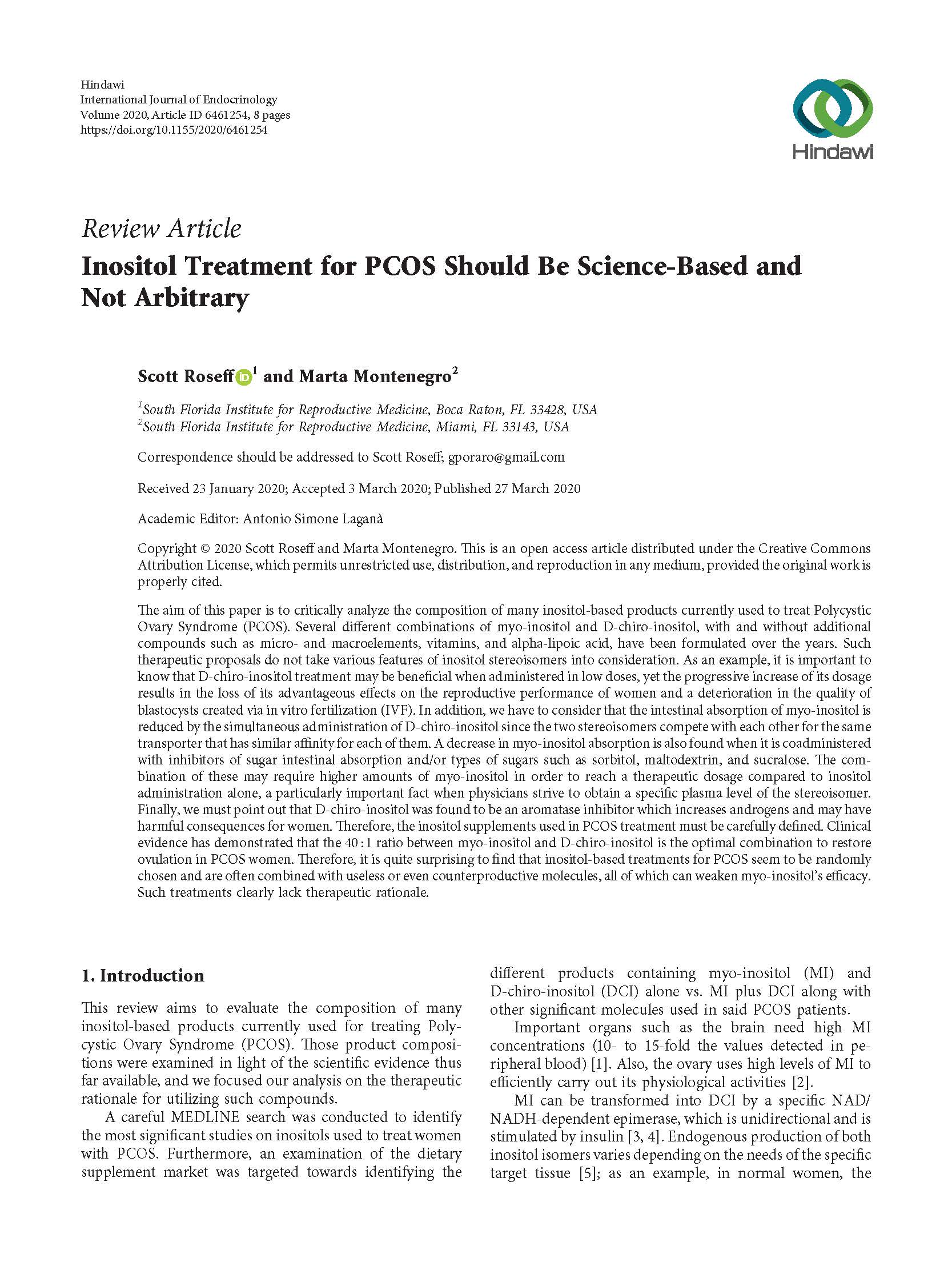Abstract
The aim of this paper is to critically analyze the composition of many inositol-based products currently used to treat Polycystic Ovary Syndrome (PCOS). Several different combinations of myo-inositol and D-chiro-inositol, with and without additional compounds such as micro- and macroelements, vitamins, and alpha-lipoic acid, have been formulated over the years. Such therapeutic proposals do not take various features of inositol stereoisomers into consideration. As an example, it is important to know that D-chiro-inositol treatment may be beneficial when administered in low doses, yet the progressive increase of its dosage results in the loss of its advantageous effects on the reproductive performance of women and a deterioration in the quality of blastocysts created via in vitro fertilization (IVF). In addition, we have to consider that the intestinal absorption of myo-inositol is reduced by the simultaneous administration of D-chiro-inositol since the two stereoisomers compete with each other for the same transporter that has similar affinity for each of them. A decrease in myo-inositol absorption is also found when it is coadministered with inhibitors of sugar intestinal absorption and/or types of sugars such as sorbitol, maltodextrin, and sucralose. The combination of these may require higher amounts of myo-inositol in order to reach a therapeutic dosage compared to inositol administration alone, a particularly important fact when physicians strive to obtain a specific plasma level of the stereoisomer. Finally, we must point out that D-chiro-inositol was found to be an aromatase inhibitor which increases androgens and may have harmful consequences for women. Therefore, the inositol supplements used in PCOS treatment must be carefully defined. Clinical evidence has demonstrated that the 40 : 1 ratio between myo-inositol and D-chiro-inositol is the optimal combination to restore ovulation in PCOS women. Therefore, it is quite surprising to find that inositol-based treatments for PCOS seem to be randomly chosen and are often combined with useless or even counterproductive molecules, all of which can weaken myo-inositol’s efficacy. Such treatments clearly lack therapeutic rationale.

